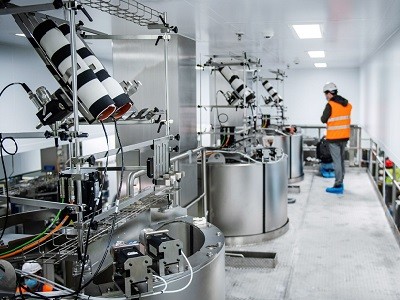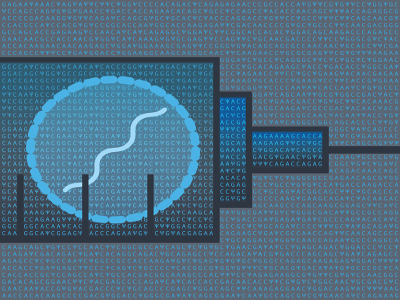Angela Evatt lay face down under anaesthesia as surgeons removed a malignant mole from her back and a lymph node from her left armpit. The purpose of the operation was not only to excise the cancerous tissue from her body, but also to begin the process of crafting a personalized vaccine that would train Evatt’s immune system to attack any tumour cells left behind.
The vaccine uses messenger RNA (mRNA), carefully constructed to encode the unique mutant proteins, known as neoantigens, that are found on the surface of Evatt’s melanoma skin cancer cells. She first received this bespoke vaccine, alongside a potent immune-stimulating drug known as a checkpoint inhibitor, as part of a clinical trial in March 2020, just months before mRNA vaccines would become household names in the fight against COVID-19.
Every three weeks, Evatt travelled from her home in Maryland to Georgetown University’s Lombardi Comprehensive Cancer Center in Washington DC to get an injection in each arm. The mRNAs enter her healthy cells and then produce the neoantigens that educate her immune system.
Despite Evatt experiencing severe flu-like symptoms for a day or two after each injection — fever, achiness, chills — the treatment seems to have been beneficial. Now in her mid-40s, she has remained in remission for more than three years after completing her treatments.
Why are so many young people getting cancer? What the data say
As is typical of individual experiences in clinical trials, determining the precise impact of the vaccine on Evatt’s recovery is difficult. “It’s impossible to know,” she says. “I’m just happy to be cancer-free.” However, the trial that Evatt participated in is yielding promising data. According to the latest number-crunch from the 157-person study, the combination of vaccine and checkpoint inhibitor reduces the risk of disease recurrence by nearly 50% compared with treatment with the inhibitor alone. The latest analysis also indicates that the vaccine contributes to lifespan extension.
“At the end of the day, you realize, ‘Damn! This combination seems to have activity,’” says lead trial investigator Jeffrey Weber, a cancer immunotherapy researcher at New York University Langone Health in New York City, who presented the findings on 3 June at the world’s largest annual meeting of cancer biologists and oncology specialists in Chicago, Illinois. (Weber and his colleagues published a previous analysis of the data at the beginning of this year1.)
A larger-scale study is still needed to confirm these promising results and to support bringing the vaccine to market. A trial involving more than 1,000 people with melanoma kicked off last July; another for nearly 900 people who have a type of lung cancer began a few months later.
But even as the cancer research community awaits further evidence, the early results have injected fresh enthusiasm into the cancer vaccine field. “It has had a big impact across all vaccine development,” says tumour immunologist Nora Disis, director of the Cancer Vaccine Institute at the University of Washington in Seattle. After decades of vaccine trial setbacks, she says, “we’ve started to see the pendulum swing”.
Success is far from guaranteed, however, and the field is thick with unresolved questions. Companies are trying to determine which stages of cancer will see the most benefit from such treatments. They are also searching for improved ways to predict the most effective neoantigens. And it is unclear whether mRNA or some other vaccine technology is the best way to stimulate an anticancer immune response.
As scientists continue to test the treatments, all of the pieces will need to come together.
“We have the first proof of concept that these things can work,” says Cristina Puig-Saus, a cancer immunologist at the University of California, Los Angeles. “Now, we just need to make them better.”
Vaccines on demand
Moderna, the company behind the vaccine that Evatt received, is one of the industry leaders working on these improvements. Capitalizing on its experience and the financial windfall from its COVID-19 response, the company has refined its manufacturing protocols and expanded capacity to produce personalized medicines around the clock.
In a football-pitch-sized production facility in Norwood, Massachusetts — a short drive from Moderna’s headquarters in Cambridge — dull black lines divvy up the grey floors into 15 bays, where pairs of technicians can work in parallel. Each bay houses its own ‘single use personalized RNA+’ machine, a refrigerator-sized unit that cranks out long strands of mRNA encoding up to 34 specific cancer mutations. The mutations correspond to different neoantigens, neatly arranged in a sequence. A mixing device then encapsulates the mRNA in fatty nanoparticles to enhance its stability and cellular uptake.

How COVID unlocked the power of RNA vaccines
“That’s the magic there,” says Elizabeth Sullivan, head of operations for the personalized vaccine programme at Moderna, as she leads a tour of the company’s manufacturing plant in mid-April.
Less visible are the innovations that go into selecting which of the many possible tumour mutations are most likely to elicit an immune response in a vaccine recipient. A series of artificial-intelligence algorithms make this call, informed by an ever-growing repository of clinical and laboratory data from other individuals that, according to Moderna’s oncology lead, Kyle Holen, should yield better predictions over time. “It’s a therapy that learns and can continue to improve,” he says.
Moderna, in partnership with the drug firm Merck, which is headquartered in Rahway, New Jersey, is currently conducting mid- to late-stage clinical trials of its vaccine across five kinds of cancer.
In all of these trials, the companies administer their experimental vaccine to people who, like Evatt, have had their tumours surgically removed but still face a high risk of cancer recurrence. By training the immune system’s T cells to identify and eliminate cancer cells at this stage, the objective is to avert a relapse — an approach known as adjuvant therapy.
Moderna executives have also raised the possibility of the vaccine being used against later-stage disease, when the cancer has spread to distant sites throughout the body, a process known as metastasis. But, so far, the field has had limited success in this setting. Although initial trials have often found that personalized vaccines produce anticancer T cells in individuals with these types of advanced cancer, those immune responses rarely lead to tumour regression or long-term survival benefits.

Angela Evatt received an mRNA cancer vaccine in March 2020, after having cancerous tissue on her back removed. The cancer has not returned.Credit: Angela Evatt
“It’s very hard to eradicate established tumours,” says Gal Cafri, a cancer immunologist at the Sheba Medical Center in Ramat Gan, Israel. The types of T-cell response that cancer vaccines elicit are well equipped for restraining the growth of small, residual tumours, which helps to prevent disease recurrence after surgery. However, these vaccines are less effective against large, established tumours, which have often evolved aggressive tactics that involve shielding themselves from immune attacks.
Moreover, early-stage cancers tend be slower-growing than late-stage ones, which gives drug developers the 1–4 months they need to design, manufacture and deliver the personalized vaccines to patients. Then, once the vaccine enters the body, more “time is needed to build up an immune response”, says Uğur Şahin, co-founder and chief executive of the biotechnology company BioNTech in Mainz, Germany, which is developing a personalized cancer vaccine in collaboration with biotech firm Genentech in South San Francisco, California.
According to Sahin and Ira Mellman, head of cancer immunology at Genentech, all of these considerations factored into the companies’ joint decision to evaluate their bespoke mRNA vaccine as a post-surgical treatment for people with high-risk colorectal and pancreatic cancers that are still localized and have not yet spread across the body. “When thinking about where is the best place to put a cancer vaccine that would give it the best chance of succeeding and establishing at least proof of concept,” Mellman says, “all roads lead to adjuvant or early disease.”
He even keeps a coffee mug on his desk to commemorate when this strategic decision was made. It reads “2018 A.D.”, standing for ‘Adjuvant Day’.
Special delivery
Both the Moderna–Merck and BioNTech–Genentech vaccines are formulated as mRNA. But that is not the only way to encode neoantigens for processing and presentation to the immune system.
In place of mRNA, many companies and academic groups rely on DNA, peptides or genetically engineered viruses. As Niranjan Sardesai, founder and chief executive of Geneos Therapeutics in Philadelphia, Pennsylvania, points out, each approach triggers its own type of immune response, which could affect the success of any vaccine candidate. “How you deliver these antigens is just as crucial as which antigens you deliver,” Sardesai says.
Some platforms, for example, excel at eliciting ‘killer’ T cells, which are thought to perform the bulk of tumour-cell destruction. However, the real-world impact of such an immunological difference remains to be seen, because only the vaccine developed by Moderna and Merck has so far shown success in a randomized trial.

The tangled history of mRNA vaccines
A bigger differentiator, researchers say, could be the computational engines that help to determine the vaccine’s composition. Each engine has its own proprietary suite of tools that it uses to select which neoantigens to target.
Most companies start with genetic sequencing of data from tumours and healthy tissues to reveal the mutations that cropped up during cancer development. T cells will not recognize all of these mutations, however, so algorithms are used to prioritize a subset — Moderna uses up to 34, BioNTech up to 20 — that are predicted to have the most potent immune-stimulating effects.
Such predictions are made on the basis of various factors, such as the levels at which neoantigens are expressed on tumour surfaces and their anticipated binding to cellular receptors that aid in provoking a T-cell response. Machine-learning models then incorporate experimental data to improve the accuracy of these tools.
The algorithms can miss their mark in provoking a cancer-directed immune response, however. “Only a small percentage of the predicted neoantigens turn out to be immunogenic,” notes Neeha Zaidi, an oncologist at the Sidney Kimmel Comprehensive Cancer Center at Johns Hopkins University in Baltimore, Maryland.
In a small study2 of the BioNTech–Genentech vaccine for treating pancreatic tumours, for example, only half of the trial participants developed T cells that were directed against any of the vaccine-encoded mutations. And among those who did, around half formed T cells against just a single neoantigen, even though the vaccines generally contained the instructions for making ten or more targets2.
“Once in a while, the stars line up,” says Alex Rubinsteyn, a computational biologist at the University of North Carolina–Chapel Hill who designs neoantigen prediction tools for personalized cancer vaccines. But, he says, instances in which several of the chosen antigens elicit anti-tumour activity could be the exception rather than the rule. Benjamin Vincent, a tumour immunologist, also at the University of North Carolina–Chapel Hill, agrees: “The field really, really wants to just say, ‘We can predict this from the genomics data only.’ It really wants it so bad, everyone is just doing it. But that doesn’t make it robust.”
Addressing this issue head on, many researchers are now supplementing their computational tools with further experimental data. In February, for example, a joint team at the La Jolla Institute for Immunology and the University of California, San Diego described a platform that uses DNA sequencing and gene-expression analyses on tumours to first identify potential neoantigens, as many others do already. The process then goes a step further by searching in patient blood samples for T cells that actually recognize those antigens3.
This kind of method is going to become more important and more prevalent, according to Stephen Schoenberger, a translational immunologist who co-led the study. “It verifies rather than merely predicts which mutations are neoantigens,” says Schoenberger, who is also chief executive and chief scientific officer of Lykeion, a company he co-founded in La Jolla to develop personalized vaccines informed by this method.
Sachet Shukla, a computational biologist at the University of Texas MD Anderson Cancer Center in Houston, is hopeful that the immune-stimulating potential of personalized cancer vaccines will improve as the research community amasses more of this information. “I think you’ll see another step jump in the accuracy of these algorithms,” he says.
When that happens, he anticipates that cancer vaccines, long regarded as ineffectual, will finally become a staple of oncology treatment: “It’s an idea whose time has come.”
